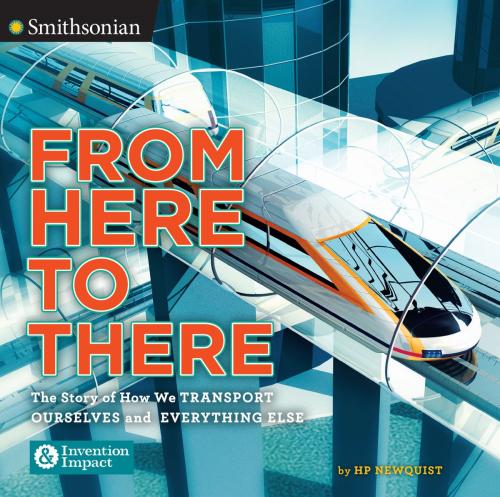From Here to There
The Story of How We Transport Ourselves and Everything Else
Kids, Technology, Inventions, How Things Work/Are Made, Two Wheels, Four Wheels, No Wheels, Transportation| Author: | HP Newquist | ISBN: | 9780698405363 |
| Publisher: | Penguin Young Readers Group | Publication: | September 12, 2017 |
| Imprint: | Viking Books for Young Readers | Language: | English |
| Author: | HP Newquist |
| ISBN: | 9780698405363 |
| Publisher: | Penguin Young Readers Group |
| Publication: | September 12, 2017 |
| Imprint: | Viking Books for Young Readers |
| Language: | English |
This lively history of transportation follows our fascinating route from primitive technology like sandals to driverless cars and beyond!
Since humans first stood upright, we've been on the move. Need food? Water? Land? A place to live? Survival depends upon motion. For thousands of years, people have devised ways to move faster, farther, and more comfortably. Their inventions—shoes, skis, the rudder, the wheel, engines, rockets—have had an enormous impact on how and where human beings live and thrive.
When human beings get a move on, change happens:
- The wheel, probably first used in the Middle East around 6,000 years ago, meant building and trading supplies could be moved more easily—whole civilizations rolled out.
- The Vikings sailed far and wide because they used a keel on their longships.
- Horse-and-carriage gridlock gave rise to subways.
- The bicycle changed the world for women in terms of freedom and fashion.
- Drones and driverless cars are the future . . . coming sooner than we think.
Award-winning author HP Newquist explores the transportation inventions and technologies that have transformed the way we experience the world around us. It’s a fascinating journey!
This lively history of transportation follows our fascinating route from primitive technology like sandals to driverless cars and beyond!
Since humans first stood upright, we've been on the move. Need food? Water? Land? A place to live? Survival depends upon motion. For thousands of years, people have devised ways to move faster, farther, and more comfortably. Their inventions—shoes, skis, the rudder, the wheel, engines, rockets—have had an enormous impact on how and where human beings live and thrive.
When human beings get a move on, change happens:
- The wheel, probably first used in the Middle East around 6,000 years ago, meant building and trading supplies could be moved more easily—whole civilizations rolled out.
- The Vikings sailed far and wide because they used a keel on their longships.
- Horse-and-carriage gridlock gave rise to subways.
- The bicycle changed the world for women in terms of freedom and fashion.
- Drones and driverless cars are the future . . . coming sooner than we think.
Award-winning author HP Newquist explores the transportation inventions and technologies that have transformed the way we experience the world around us. It’s a fascinating journey!















